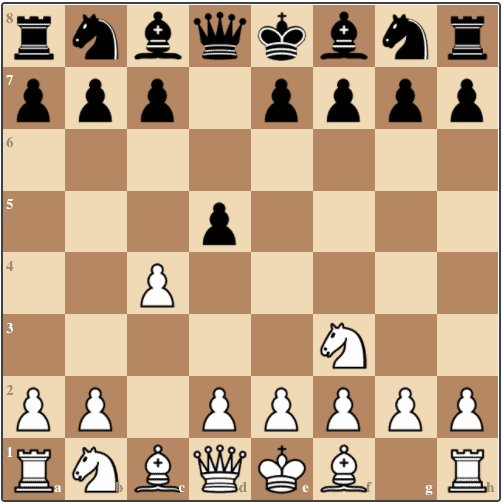The Importance of your Opponent's Last Move
The Importance of your Opponent's Last Move
-------------------------------------------------------------------------------------
What did the Opponent's Last Move Change about the Position?
Checks, Captures, Threats (CCT)
(After your opponent's last move check for tactics, threats and captures as your tactical sight is at its height in the first minute you look at the new position.)
Examine the most forcing order of moves; look at all of the possible Checks, Captures and Threats - both yours and your opponent's - to avoid eliminating possible good candidate moves and to identify potential tactical threats.
Calculate until there are no more forcing moves.
Are there new possibilities in the position for tactical or positional exploitation?
Look for overlapping ideas that can be applied from different variations (tactical themes and key in-between moves such as checks and threats).
Put an effort into "switching sides" mentally and attempting to destroy your position after visualizing the selected move.
----------------------------------------------------------------------------------------
What are the consequences of your opponent’s last move?
The habit of evaluating the consequences of a move and recording them somewhere in your mind will help you a lot even in developing your calculation power (and also in avoiding oversights and blunders!).
Check all elements, such as occupied squares, an open diagonal, an overloaded piece, a weak square somewhere, a pinned pawn.
In the case of complicated positions (and simpler positions too), your head won’t be spinning anymore. Instead, the position’s resources will reveal themselves in front of your eyes sooner and simpler.
When playing a piece in reply, some squares on the board become defended or attacked, but other squares become unprotected. These changes are a source of many blunders or oversights during practical chess; by seeing such consequences you can avoid many errors of your own and benefit from those of your opponent.
---------------------------------------------------------------------------------------
What was the previous function of the piece your opponent just moved?
What is the new function of the piece they just moved?
What are the two-three move projections for the piece they just moved?
Where is the most damaging place they could go? What can it attack? Who can help it in that attack?
What is my strategy now?
Your strongest move often takes advantage of your opponent's last move.
Does the piece I'm about to move have current obligations?
---------------------------------------------------------------------------------------------
Something I pieced together from various sources on the net...


No comments:
Post a Comment